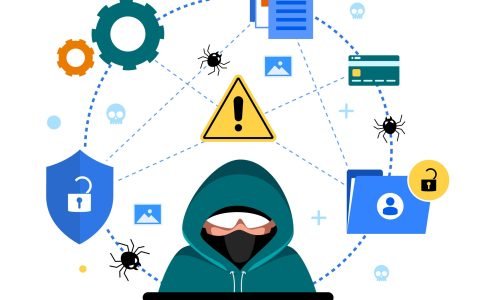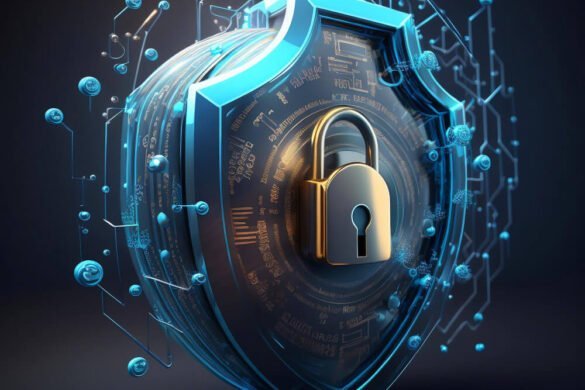In today’s increasingly connected world, public Wi-Fi offers convenience and can often help you save money. However, it also poses a number of security risks that need to be considered when accessing networks in public places. In this article, we’ll explore the potential security risks of using public Wi-Fi connections so that you can make informed decisions about how to keep yourself safe while still enjoying the benefits they offer.

Public Wi-Fi connections, such as those found in coffee shops and other free Wi-Fi hotspots, can be convenient but they also come with potential risks. Before connecting to a public Wi-Fi network, it’s important to understand how criminals might expose or intercept your sensitive data.
Below are some potential security risks associated with public Wi-Fi hotspots.
Man-in-the-Middle Attacks (MITM)
Man in the middle attacks, also known as MITMs, involve attackers intercepting and relaying communication between two parties. They can be used to gain access to confidential information, such as usernames and passwords, or to insert malicious code into web pages. In a middle attack, an attacker intercepts data from two different devices that are communicating with each other—for example, when you’re using a public Wi-Fi network to access your bank account. By positioning themselves between you and your online banking website, the attacker can read and even modify the data you are sending.
Packet Sniffing
Packet sniffing is a technique, attackers use to capture and analyse data transmitted over a network. By using packet sniffing tools, an attacker can intercept and examine all of the data passing through the network in order to find valuable information such as usernames, passwords, bank account numbers or credit card details.
Malware Distribution
Using public Wi-Fi can also put you at risk of malware distribution. Hackers can set up fake networks that look real to trick unsuspecting users into connecting and downloading harmful software. This malware can be used for different purposes like stealing data or taking control of your device.
Session Hijacking
Session hijacking occurs when an attacker steals a user’s session on a website or application. When you are connected to a public Wi-Fi network, your device is more vulnerable to this type of attack. Attackers can use tools to intercept and steal data from an active session, allowing them access to the website without needing to authenticate.
Device Exposure
Connecting to a public Wi-Fi network can expose your device to malicious users. If your device is not secured, attackers can gain access to it and use it as an entry point into your home or business network. This can allow them to spy on you or steal confidential information such as passwords or personal data. It’s important to make sure your device is secured before connecting to a public Wi-Fi network.
Insecure Websites
Public Wi-Fi networks can also put you at risk of visiting insecure websites. Attackers may set up fake websites to look like legitimate site in order to lure unsuspecting users into entering their personal information. Once they have your data, they can use it for malicious purposes such as identity theft or fraud. It’s important to make sure the website you are visiting is secure before entering any personal information.
Data Theft
Data theft can also be a risk when using public Wi-Fi networks. Attackers can use tools to intercept and steal data sent over the network, such as emails, messages, or financial transactions. This data can then be used for identity theft or fraud. To protect your data, make sure the websites you are visiting are secure and encrypting your data.
Staying Secure

Fortunately, there are steps you can take to mitigate the risks associated with public Wi-Fi. Let’s take a look at how you can protect your data from unsecured Wi-Fi.
Using a Virtual Private Network (VPN) can help protect your data from malicious users on public Wi-Fi networks. A VPN encrypts all of the data sent over the network, keeping it secure from anyone who might be listening in. There are many different VPN services available to fit any budget or need.
Install Security Software
When possible, enable two-factor authentication (2FA) when connecting to public Wi-Fi. 2FA adds an additional layer of security by requiring a unique code or key be entered in addition to your password before gaining access to the network. This can help protect your data from attackers who have stolen your username and password.
Be mindful not to access any sensitive information
Installing security software such as antivirus or anti-malware can also help protect your data from malicious users on public Wi-Fi networks. Security software can detect and stop attacks before they become a problem, keeping your data secure.
Ensure that you use a website with a secure HTTPS connection.
When accessing websites on public Wi-Fi, it is important to make sure the website you are visiting uses HTTPS. This will help protect your data from attackers who can view all of the traffic on an unencrypted network.
Use Your Mobile Hotspot
Using your mobile hotspot instead of a public Wi-Fi connection is another way to help keep your data secure. A mobile hotspot creates a secure connection between your device and the internet, which makes it difficult for attackers to intercept any of your data.
Keep Your Software Up
Finally, make sure that all of the software you use is kept up-to-date with the latest security patches. This will help to protect your data from attackers who are looking for devices with outdated software that may have vulnerabilities.
Conclusion:
Public Wi-Fi networks can be a convenient way to stay connected while on the go, but they also carry significant risks. Attackers can use these networks to intercept your data or set up malicious websites in order to steal your information. To protect yourself, make sure you are using a VPN and enabling two-factor authentication whenever connecting to public networks. Finally, always check that the websites you are visiting are secure before entering any personal information. By following these steps, you can protect yourself from potential online threats while using public Wi-Fi.

